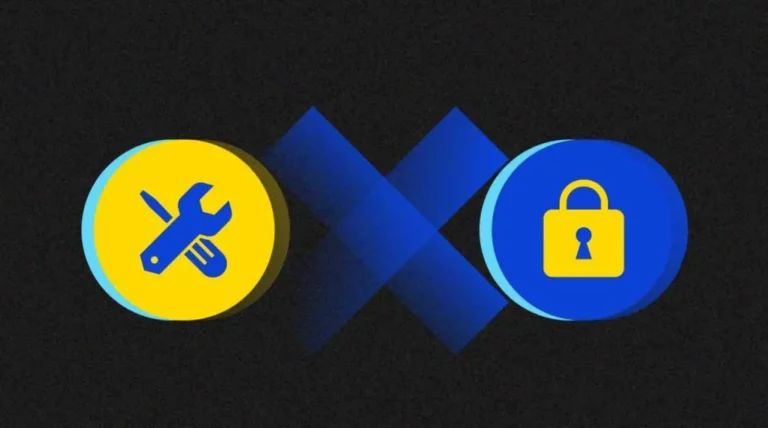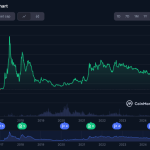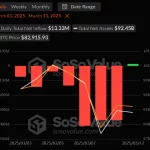Yield farming has become a hot topic in the DeFi space, sparking many questions about its nature and popularity. Experts attribute the impressive growth of the DeFi sector this year to yield farming. This growth is driven by liquidity farming, where investors and speculators provide liquidity to platforms offering lending and borrowing services. In return, these platforms offer high interest rates and tokens as incentives.
Liquidity providers, or yield farmers, are the current stars of DeFi. Leading names include Compound (COMP), Curve Finance (CRV), and Balancer (BAL). To engage in yield farming, a secure and reliable wallet is essential. Our guide on the best DeFi wallets can help you get started.
Compound: Pioneering the Liquidity Farming Craze
The launch of Compound’s COMP token on June 14th, 2020, initiated the liquidity farming phenomenon. As Compound’s governance token, COMP’s distribution was a success, helping the platform achieve $600 million in total value locked (TVL), surpassing MakerDAO on the DeFi Pulse leaderboard.
Balancer followed with the distribution of its BAL token, launching its protocol rewards program in May and achieving $70 million in TVL shortly after COMP’s distribution.
Though yield farming’s popularity surged with COMP, it existed in DeFi prior. Synthetix introduced the protocol token rewards concept in July 2019, rewarding liquidity providers in the sETH/ETH pool on Uniswap V1 with tokens.
Yield Farming: DeFi’s Solution to Liquidity Challenges
The main issue in DeFi is liquidity, similar to traditional banks needing funds for operations and investments. In DeFi, anonymous internet users provide liquidity, attracting HODLers with idle assets through innovative strategies.
High liquidity is crucial for avoiding price slippage and enhancing trading experiences, particularly for decentralized exchanges (DEX).
Borrowing from users is emerging as a popular option, potentially rivaling traditional borrowing methods in the future.
Understanding Yield Farming
Yield farming resembles depositing money in a bank, where banks pay interest on deposits. In DeFi, users lock funds with a protocol, which lends them to borrowers at an interest rate. In return, platforms reward fund providers, sometimes sharing fees.
Earnings from interest rates and fees are minor compared to the potential profit from new crypto tokens issued by lending platforms. As token values rise, so do users’ profits.
Uniswap and Balancer offer liquidity providers fees for adding liquidity to their pools. Currently, they are among DeFi’s largest liquidity pools. Uniswap pools split assets 50-50, while Balancer allows up to eight assets with custom allocations.
Liquidity providers earn a share of the platform’s fees for trades through the pool. Uniswap providers have seen great returns due to increased DEX trading volumes.
Curve Finance: Simplifying Complex Yield Farming
Curve is a leading DEX liquidity pool, offering efficient stablecoin trading. It supports various stablecoins and BTC pairs, using automated market makers for low-slippage trades and low transaction fees.
Despite being relatively new, Curve outperforms many exchanges in trading volume and is popular among arbitrage traders for savings during trades.
Curve’s algorithm focuses on reducing slippage, while Uniswap’s increases liquidity availability, making Curve a top choice for high-volume traders.
The Risks of Yield Farming
Impermanent Loss
Yield farming carries the risk of financial loss, especially with non-stablecoin tokens due to market volatility. Adverse price changes can reduce the value of staked assets.
For example, staking ETH and a stablecoin to farm a third token may result in greater losses if ETH’s price drops, as explained in this article by Quantstamp.
Smart Contract Risks
Smart contracts are vulnerable to hacking, with several cases reported this year. The DeFi boom has attracted attackers to protocols with high TVL.
Many DeFi protocols are in early stages, making them susceptible to incentive gaming, as seen with YAM Finance’s rebasing error causing significant value loss.
Liquidation Risks
Cryptocurrency volatility can affect collateral, putting debt positions at risk of becoming undercollateralized and facing inefficient liquidation mechanisms.
Bubble Risk in DeFi Tokens
Yield farming protocol tokens are reflexive, with values potentially increasing with usage, reminiscent of the 2017 ICO boom. Many projects gain hype rather than utility-based market caps.
Rug Pulls
Platforms like Uniswap allow liquidity withdrawal at will, unless locked by third parties. Developers often hold significant assets, posing risks of market dumping, as seen in the Sushiswap incident.
Conclusion
Yield farming is trending among crypto enthusiasts and attracting new users to DeFi. However, it poses risks like impermanent loss, smart contract vulnerabilities, and liquidation risks, warranting careful consideration and capital management.










